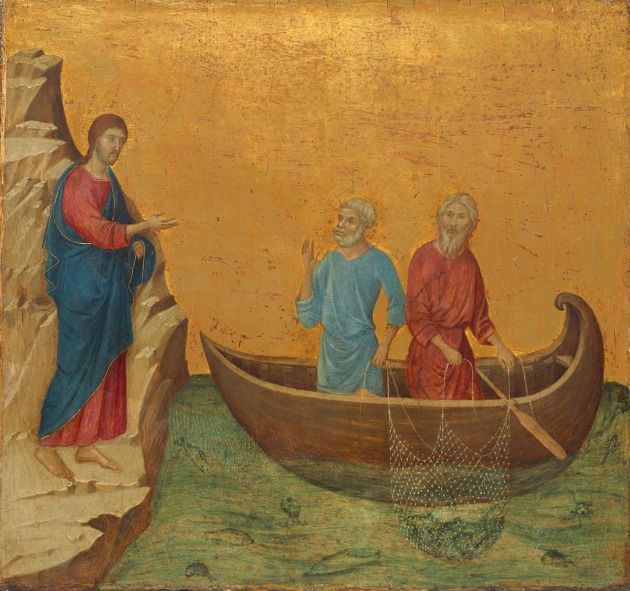When the house also embraced the sea
Mark's Gospel expounds the whole story of Jesus and his first companions through the filter of the master / disciple[1] relationship, a time-honoured socio-religious pattern thereby easily accessible to his audience. The importance of the part played by this relationship model emerges with the opening of the story when, in the key episode of the calling of the two sets of brothers (Simon[2] and Andrew[3], James[4] and John), the Evangelist describes the beginning and the first steps of Jesus' movement. Mark is particularly insistent on the personal commitment to the group and the personal relationship shaping up between the master and his disciples « As Jesus walked beside the Sea of Galilee; he saw Simon and his brother Andrew casting a net into the lake, for they were fishermen. “Come, follow me,” Jesus said, “and I will sed you out to fish for people.” At once they left their nets and followed him. When he had gone a little farther, he saw James son of Zebedee and his brother John in a boat, preparing their nets. Without delay he called them, and they left their father Zebedee in the boat with the hired men and followed him. »
(Mk 1, 16-20)
In these lines, by mentioning the Sea of Galilee[6], the Evangelist has, right away, volunteered details concerning the place where the scene is set. Such data obviously meets the basic requirements of the narration wherein a “who” (subject of the story) is always set against a “when” and a “where”. But beyond such considerations lies a much more far-reaching point. We now know, thanks to recent anthropological research that our social mindscape tends to place a person not only in a specific time and place but also within a specified social action: « In this perspective, a house is necessarily a container of human activities; a street is a route followed by travellers; and a field is the place where agricultural activity is carried out. It is the function that the individuals assume in a given context that allows us to understand their social makeup. »
(Adriana Destro, Mauro Pesce).
Hence the Sea of Galilee should not simply be understood as a physical place but first and foremost as a social space, that is a place where fishing-related activities take place. Furthermore it is indeed this activity that the disciples are pursuing as they are about to be called. However this observation doesn't go far enough. In the 1st century Mediterranean world the sea did not in this perspective constitute an independent social space but rather an extension of the domestic social space that included within itself a broad range of places and activities which today would pertain to different social spaces. One could joke that in Mark's days, the home took in the sea as well. Indeed, even though the text is scant on detail, the presentation of the disciples seems to be fully consistent with the rules of ordinary professional and family life. By showing us the fishermen busy working, Mark implicitly stresses their position within the oikos[7], namely the household.
 Informations[8]
Informations[8]The resulting image is of socially and economically active types with a clear position in the socio-economic structure of the oikos, and therefore fully integrated in village and family life. In relation to his disciples, however, Jesus is immediately “out of place”: he is not a fisherman and his family is not local. The fact that he is a stranger, on the move for good measure, could suggest a passer-by or a pilgrim. But his attitude towards the four fishermen does not allow any doubt: he is no pilgrim, not even a mere itinerant preacher.
Paradoxically, the unadorned style of Mark's description further stresses Jesus' unique nature: he does not come over as an ordinary man but as a charismatic figure with strong, almost hypnotic powers of attraction. Coincidentally, Jesus' decision to set himself outside ordinary village life and religious institutions is equally transparent: on the one hand the choice of an itinerant life indicates the will to escape not only one's family and village but also the whole relationship network founded in the oikos; on the other hand the decision to recruit disciples in unexpected places (say a lakeside), rather than in places normally dedicated to religious activities stresses his intention to steer clear of his day's institutional centres. The overall picture is that of an eccentric, marginal personality bereft of institutional legitimacy and who appears to seek recognition as an outsider in search of “alternative” dimensions and spaces “other” than the socially recognised ones.



_1.jpg)




